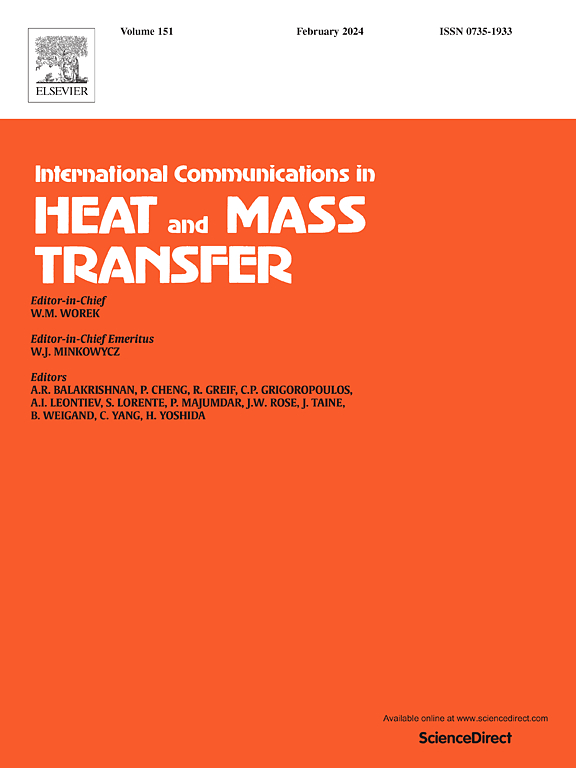A comprehensive study of the performance, economic and environmental impact of multi purpose refrigeration systems utilizing eco-friendly refrigerants for two-modulating cold storage
IF 6.4
2区 工程技术
Q1 MECHANICS
International Communications in Heat and Mass Transfer
Pub Date : 2025-03-27
DOI:10.1016/j.icheatmasstransfer.2025.108905
引用次数: 0
Abstract
Due to the strong dependence of the food industry on the cold chain, utilizing an optimal refrigeration system plays a crucial role in the cold storage facilities. This study investigates two multipurpose compression refrigeration systems, including flash tank and cascade systems, across four distinct climates with varying cooling load distribution between their stages used predominantly in multipurpose cold storage facilities. R744 and R290 and R717/R290 and R717/R744 refrigerants were scrutinized within flash tank and cascade refrigeration systems, respectively. Findings revealed that the R744 refrigerant is unsuitable for the flash tank system. The study established that while both systems have high energy and exergy efficiency, the cascade system outperforms the other by up to 12 % depending on cooling load distribution. When the cooling load is evenly distributed between above-zero and subzero temperature, the flash tank system becomes up to 3 % more cost-effective. However, as the cooling load distribution increases for subzero temperature ranges with the total cooling load being constant, the cascade system performs up to 22 % more efficiently in terms of economy, especially in hot and humid climates. Furthermore, at 50 % cooling load distribution, the flash tank system emitted up to 5 % less CO2 in different climates, while the cascade system, under increased cooling load, generated up to 40 % less CO2. Finally, comparing the two refrigerants revealed that R744 emission up to 13 %more CO2 than R290 at 90 %cooling load distribution in cold climates.
求助全文
约1分钟内获得全文
求助全文
来源期刊
CiteScore
11.00
自引率
10.00%
发文量
648
审稿时长
32 days
期刊介绍:
International Communications in Heat and Mass Transfer serves as a world forum for the rapid dissemination of new ideas, new measurement techniques, preliminary findings of ongoing investigations, discussions, and criticisms in the field of heat and mass transfer. Two types of manuscript will be considered for publication: communications (short reports of new work or discussions of work which has already been published) and summaries (abstracts of reports, theses or manuscripts which are too long for publication in full). Together with its companion publication, International Journal of Heat and Mass Transfer, with which it shares the same Board of Editors, this journal is read by research workers and engineers throughout the world.

 求助内容:
求助内容: 应助结果提醒方式:
应助结果提醒方式:


